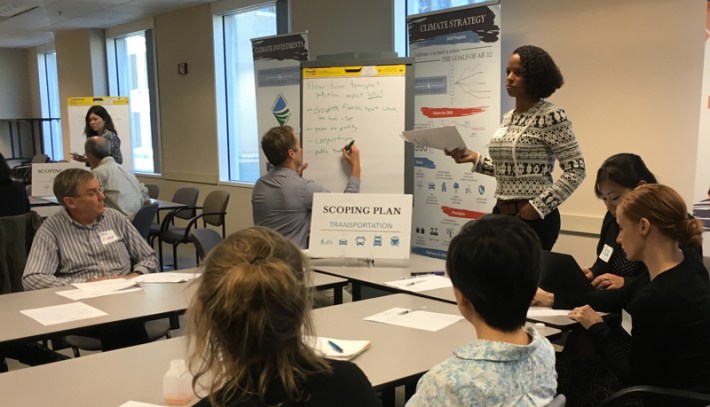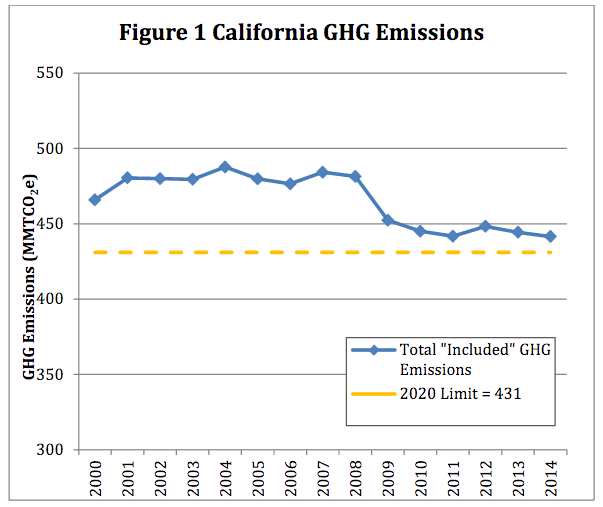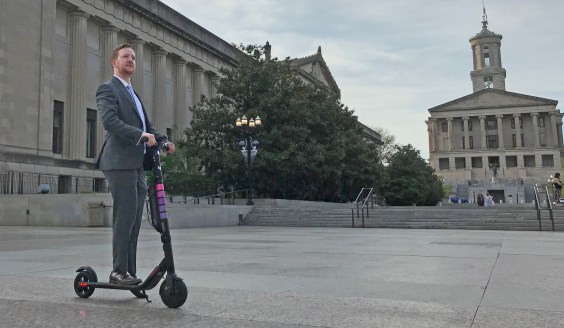
California's Global Warming Solutions Act, passed in 2006, opened the door for cap and trade, which among other things collects revenue to be invested in reducing emissions. The bill, A.B. 32, also created an Environmental Justice Advisory Committee to help the state spend those revenues equitably.
The existence of this committee was an acknowledgement that the costs of cap and trade would ultimately be borne by consumers, and that communities that have been more heavily affected by climate change and pollution—usually low-income communities and people of color—while contributing monetarily, could potentially miss out on its benefits.
A.B. 32 also set the goal of reducing greenhouse gas emissions to 1990 levels by 2020. In April of this year Governor Brown signed an executive order that extended that goal, to a target of forty percent below 1990 levels by 2030. If the world could achieve that level of emissions, global warming would remain below the threshold of major climate disruptions, according to scientific consensus.
Brown's executive order also calls for a new scoping plan to define priorities and create strategies to reach the new emission reduction target.
Air Resources Board (ARB) staff released a draft Scoping Plan Concept Paper [PDF] last month. The scoping plan is a giant effort that integrates existing plans, including the Sustainable Freight Action Plan and the California Transportation Plan 2040, and identifies policies to minimize costs and maximize solutions for multiple state goals, including economic vitality. It has to create a flexible framework, both because there are many, sometimes competing, goals and because greenhouse gas reduction strategies vary widely and need to be evaluated and adjusted as we learn more about them and their interactions with each other.
The environmental justice piece includes the recognition that “the capacity for resilience in the face of climate change is significantly driven by living conditions and the forces that shape them, such as income, education, housing, transportation, environmental quality, access to services such as health care, healthy foods and water, and safe spaces for physical activity, and good health status,” according to the Scoping Plan Concept Paper. Therefore strategies that focus on alleviating poverty, increasing opportunity, improving living conditions, and reducing health and social inequities “will result in more climate-resilient communities.”
The concept paper discusses various scenarios, for example: business as usual, continued cap and trade with a lower cap, or replacing cap and trade with a carbon tax. Each scenario would require different strategies and would vary in emission reductions.
Right now, the Environmental Justice Advisory Committee focuses on listening to advocates and the public's concerns about environmental justice issues to keep in mind as they advise the ARB on the scoping plan. To that end, they have held meetings so far in San Bernardino, San Diego, and Oakland—the last of which Streetsblog attended last night.

Future meetings will be held starting next Monday in Wilmington, followed by meetings in South Los Angeles, Fresno, Modesto, Bakersfield, and Sacramento. See the end of this post for details.
At last night's meeting, ARB staff and Environmental Justice Advisory Committee members first talked about what the state has achieved so far (some progress toward achieving the 2020 statewide GHG target accompanied by solid economic growth) and what it needs to achieve in the future (much more aggressive reductions in greenhouse gases, requiring more aggressive action by everyone— “all hands on deck”).
Then the meeting broke up into smaller discussion groups to tackle four issues in particular greenhouse gas-producing sectors: transportation, energy, industry, and natural and working lands, including urban forests.
Participants, from a wide range of groups including environmental and community advocates as well as interested members of the public, grappled with a series of questions about how climate change affects communities on the ground and what implications that has for formulating policies.
In the transportation group, specific recommendations included better, more frequent transit. One participant pointed out that transit needs much more support if it is to be useful enough to get people to use it instead of driving. “That means funding for operations, not just infrastructure. Building a new light rail only brings benefits to white, privileged people,” she said, those who already have jobs and access to transportation. “The scoping plan needs stronger language supporting transit and moving away from funding highways,” she said.
Another participant pointed out that maintenance yards—for transit vehicles, post office vehicles, or police vehicles—are frequently located in low income communities, where they exacerbate already bad air quality.
Others pointed out that good projects need to be funded right away, so the benefits can be realized now, rather than put off to some point in the future, as frequently happens in planning documents.
“We're still funding projects now that lead to increasing greenhouse gas emissions” specifically expanding highways, said one participant, a teacher at a local school and an environmental advocate. “Those are right next to schools in environmental justice communities. We need mobility pathways in areas away from pollution sources like freeways—like along existing greenways like creeks.”
One participant asserted that investing in high speed rail—which takes up the lion's share of cap-and-trade funding—will do nothing to improve the transit options in her community.
Meeting organizers wanted to know how access to electric vehicles could be improved for low-income areas, but at this meeting the answers were not forthcoming. “Accessibility has to include everything,” said one participant. “Complete information about options, how much it costs, how to access it.” He described what he called the “Helsinki model,” saying that in that city all transportation options are easily accessed via a single mobile app.
Others pointed out that for full accessibility you also have to consider people without bank accounts, people who speak different languages, and those who are young or very old.
“If you want to change behavior patterns, you have to talk to people, not at them,” said one.
Reached after the meeting, one participant who works at a consulting firm that prepares and updates Climate Action Plans found the meeting useful for a number of reasons, including the opportunity to connect with staff at ARB. “It is fantastic to see California working towards a circular economy and reducing the burden on disadvantaged communities by specifically targeting or benefiting marginalized communities,” she wrote. “It was great to see the ARB represented by physical people, present and listening to the concerns of the community. I think that is increasingly important for sustainable and impactful change.”
The committee requests comments, which can be made here, by August 5. The plan is for the ARB to have a draft Scoping Plan out some time in the fall, to be presented to the board at its November meeting. A final draft will be released in early 2017, for approval by the board in March.
Upcoming ARB Environmental Justice Advisory Committee meetings will be held on the following dates. Details are available here.
- Wilmington: Monday, July 25, 5 to 8 p.m. at the Wilmington Senior Center, 1371 Eubank Avenue
- South Los Angeles: Tuesday, July 26, 6 to 8 p.m. at Holman United Methodist Church, 3320 W. Adams Blvd.
- Fresno: Thursday, July 28, 5:30 to 8 p.m. at the San Joaquin Valley Air Pollution Control District Central Region Office's Governing Board Room, 1990 E. Gettysburg Avenue
- Modesto: Thursday, July 28, 5:30 to 8 p.m. at the San Joaquin Valley Air Pollution Control District Modesto Office, 4800 Enterprise Way
- Bakersfield: Thursday, July 28, 5:30 to 8 p.m. at the San Joaquin Valley Air Pollution Control District Southern Region Office, 34946 Flyover Court,
- Sacramento: Friday, July 29 5 to 8 p.m. at the Sierra Curtis Neighborhood Association, 2791 24th Street





